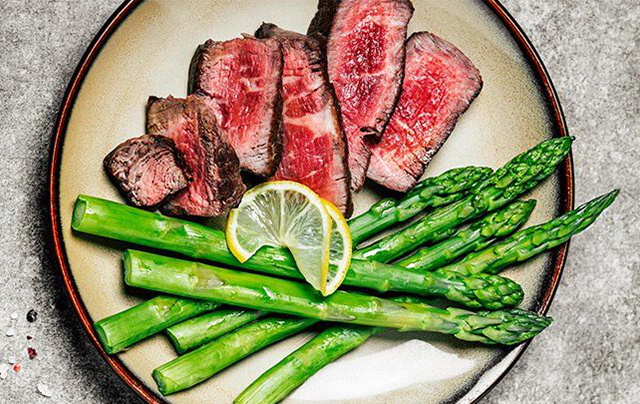The ketogenic diet has been rising in popularity, and for good reason — it is simple and yields significant results. Whether you want to lose fat, increase energy, enhance brain health, improve your blood sugar levels, or improve your overall health, keto may be the diet you are looking for.
However, before we learn how to start a keto diet, we must develop a deeper understanding of what it is and why it is so effective. Knowing the what and why behind this way of eating plays an integral role in your keto diet success as well as knowing how to get started.
1. Know What Foods You’ll Eat and Avoid on the Ketogenic Diet
In following a keto meal plan, you’ll be severely limiting carbs. Start off with between 20 and 30 grams (g) of carbohydrates per day, says the New York City–based dietitian Kristen Mancinelli, RD, author of The Ketogenic Diet: A Scientifically Proven Approach to Fast, Healthy Weight Loss.
Also make sure that you know what foods have mostly carbs, fat, and protein, so you can make the right choices. For instance, it’s not just bread, pasta, chips, cookies, candy, and ice cream that contain carbs. Beans may contain protein, but they’re also very high in carbohydrates. Fruit and veggies also mostly contain carbs. The only foods that don’t contain carbs are meat (protein) and pure fats, like butter and oils (including olive oil and coconut oil).
2. Examine Your Relationship With Fat — Keto Involves Lots of It!
“People are afraid of fat because they’ve been told that it’ll kill them,” says Mancinelli. What is confusing is that research today remains mixed. Some studies suggest that replacing saturated fat with polyunsaturated fat (and avoiding unhealthy trans fat) is important for mitigating heart disease risk, while others suggest that total fat and types of fat weren’t associated with cardiovascular problems, according to an article published in June 2018 in BMJ. (2) Deciding exactly how to eat then becomes confusing. What is helpful, the authors note, is to remember that food is more than a single nutrient, and it’s the overall quality of the diet that counts. (They do say that high-fat, low-carb diets still need more research to assess their long-term health benefits and risks.)
To prepare for a high-fat diet, which can be uncomfortable at first, start making small adjustments to what you eat every day, she suggests, like ordering a burger on lettuce leaves and subbing green veggies for fries.
3.Before ketogenesis begins, do a physical exam
It is recommended to have a physical examination, such as hematuria routine and liver and kidney function, before ketogenesis begins.Ketogenic diets are not something you can do when you want to.After the result is no problem, you can first try to reduce the staple food, gradually transition to no staple food, and then in the strict ketogenesis, that is, the carbon and water control at about 5% of the whole day, fat increased to 75%~80%.Pay close attention to your physical condition during this period.
4.Learn to Read Food Labels
When you learn to read food labels, you will be SHOCKED at what is actually in some foods. This is so important for Keto. You want to mainly look at Fat, Carbohydrates, Fiber, Sugar, and Protein.
5.Clean Out Your Fridge + Pantry – Get Rid of Non Keto Foods
Eliminate temptations before they happen. Go through your pantry and get rid of all high carb foods. Or, if you’re like me and hate the idea of throwing away perfectly good food, move it to a completely different shelf. I totally reorganized our pantry and fridge when starting keto and made sure to move any non Keto-friendly foods to the bottom cabinet.
6. Talk to Your Family About Your Weight Loss Goals on the Diet
Tell them your plan. You may not be able to eat what they’re eating during family mealtimes, so you’ll want to prepare them (and yourself) for what your new habits will look like. Because this diet is often done only short term (three to six months), you can assure them that it’s temporary.
If you get pushback, announce: “I’ve done my research, I’ve figured out it’s safe, and I really want to try this,” recommends Mancinelli. They don’t have to like what you’re doing, but it does help if they have your back. In a study published in September 2014 research in Obesity, having the support of friends and coworkers helped dieters more successfully lose weight and maintain that loss over a two-year period. (4) It also can’t hurt if everyone knows your goals on a keto diet so they’re less likely to push office treats or suggest splitting a side of fries when you’re out to dinner.
7. Know What Side Effects to Expect (for Example, the ‘Keto Flu’)
For all the attributes of a ketogenic diet (like weight loss), there’s one big side effect you have to be prepared for: the keto flu.
The keto flu is a term that refers to the period after you start the diet when your body is adjusting to burning fat for energy. “Some people have no problem with it and others are miserable,” says Mancinelli.
In the first week or 10 days, you may feel extremely lethargic in your limbs. Walking upstairs may feel impossible. You may deal with mental fog. Often, keto causes constipation, or potentially diarrhea, because of a change in fiber intake.
For that reason, you should pick a start date when your week isn’t crazy with deadlines and obligations; choose a slower time when you can rest as needed. Along the same lines, you’ll want to be sure to take it easy with exercise for the first week or two as your body adjusts to burning more fat rather than carbs for fuel.




